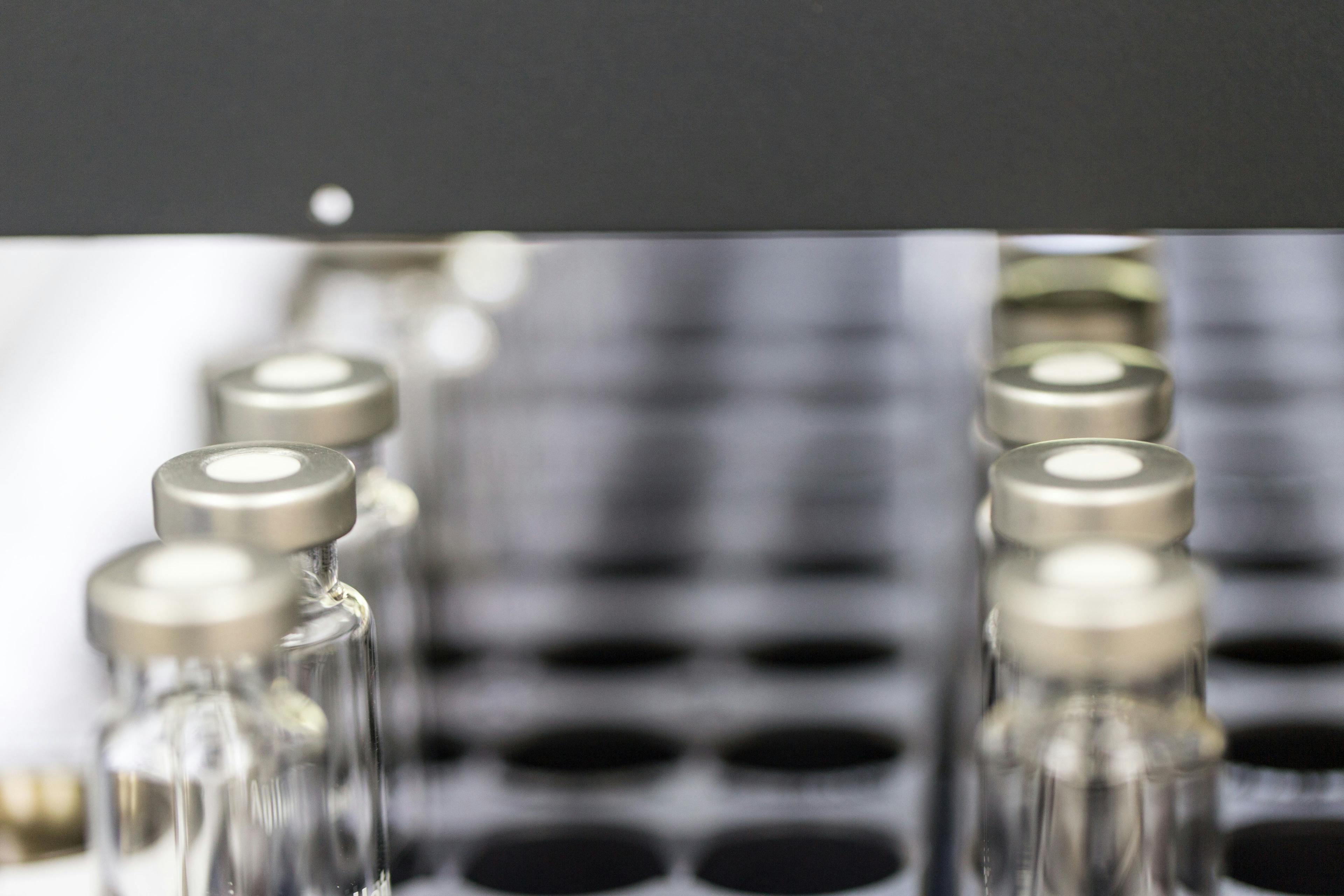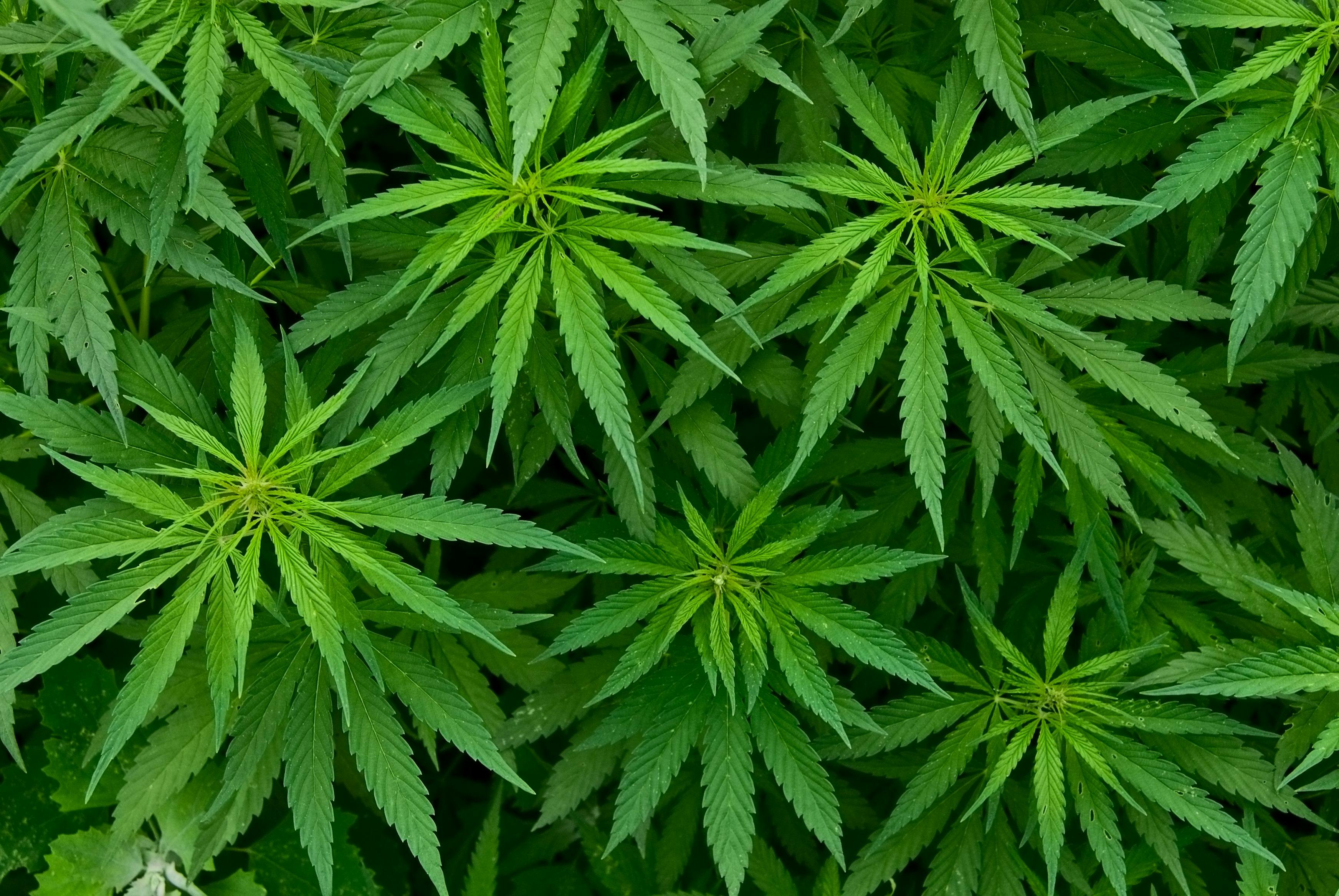From Pittcon 2023 and Beyond: The Gas Chromatography Products to Watch This Year
“GC Connections” presents the column’s annual review of new developments in the field of gas chromatography made available introduced in 2022-2023.
I am pleased to present our annual review of new products in gas chromatography, introduced between spring 2022 and spring 2023. With the Covid-19 pandemic mostly behind us, Pittcon reconvened in person for the first time since 2020, in Philadelphia, Pennsylvania, from March 18–22, 2023. In general, trade shows have been trending smaller over the past two decades, and Pittcon is no exception. While the smaller show has a more intimate feel, one can easily see the widening of the aisles, the greater spacing of the booths, and reduced efforts from major vendors. This reduced effort is unfortunate; I hope that major vendors will reconsider attending and marketing at these expositions as a means for “waving the flag,” not only for themselves, but for the analytical science industry as a whole.
Pittcon 2024 will be held from February 24–28, 2024, in San Diego, California. Now that we are out of the pandemic, I challenge everyone to attend a professional conference over the next year. Also, consider participating in a local or regional chromatography discussion group or local section of the American Chemical Society (ACS) meeting. In the remainder of 2023 and early 2024, I will be attending at least four meetings, including the American Chemical Society in San Francisco in August 2023, the Eastern Analytical Symposium in Princeton, New Jersey in November 2023, and Pittcon in San Diego. I have used the rise of the virtual conferences to attend additional meetings that I would not have attended otherwise due to the travel costs. Two years of global pandemic were extremely difficult for conference organizers, and for the many vendors, contractors, and economies that conferences support. They still need your help, even more than last year. Conference and meeting attendance is still the best way to improve skills, learn about new techniques, train, and educate yourself.
In the specific space of gas chromatography, I highly recommend the 20th International 2-D Gas Chromatography (GCxGC) Symposium, held in Canmore, Alberta, Canada, on May 28–June 1, 2023. This meeting will include any of the best minds in GCxGC and GC, and is of special interest to anyone who has heard about GCxGC and wants to learn more about it. The list of speakers is an international all-star list of top chromatographers. For a no-cost virtual experience, look out for the 2023 ChromTalks, in May, sponsored by LCGC and ChromAcademy, its online training platform.
GC continues to have a strong presence on the conference circuit and in literature. Topics such as cannabis analysis, biofuels, food and bever- ages, forensics, pharmaceuticals, and general applications of both GC and GCxGC are seen in a robust publication space. GC itself is trending toward being less the driver of research than its application to scientific problems.
The most effective online search for GC today probably begins with phrases such as “GC of ____,” with your analyte or sample of interest filling in the blank.
The information presented in this article is based on vendors’ responses to questionnaires and additional information from press releases, websites, and product literature, not on actual use or experience of the author. Every effort has been made to collect accurate information but because of the preliminary nature of some of the material, LCGC North America cannot be responsible for errors or omissions. This column cannot be considered a complete record of all new GC products introduced in the past year because not all vendors responded to the questionnaire, nor is all the submitted information necessarily included here, because of the limited available space and the editors’ judgment as to its suitability. Table I provides a listing of the vendors highlighted in this review, some of whom are lesser known in the areas they are listed, showcased new products this year, or both. For a more complete picture of the GC space today, I encourage you to also review the three previous years’ reviews (1–3).
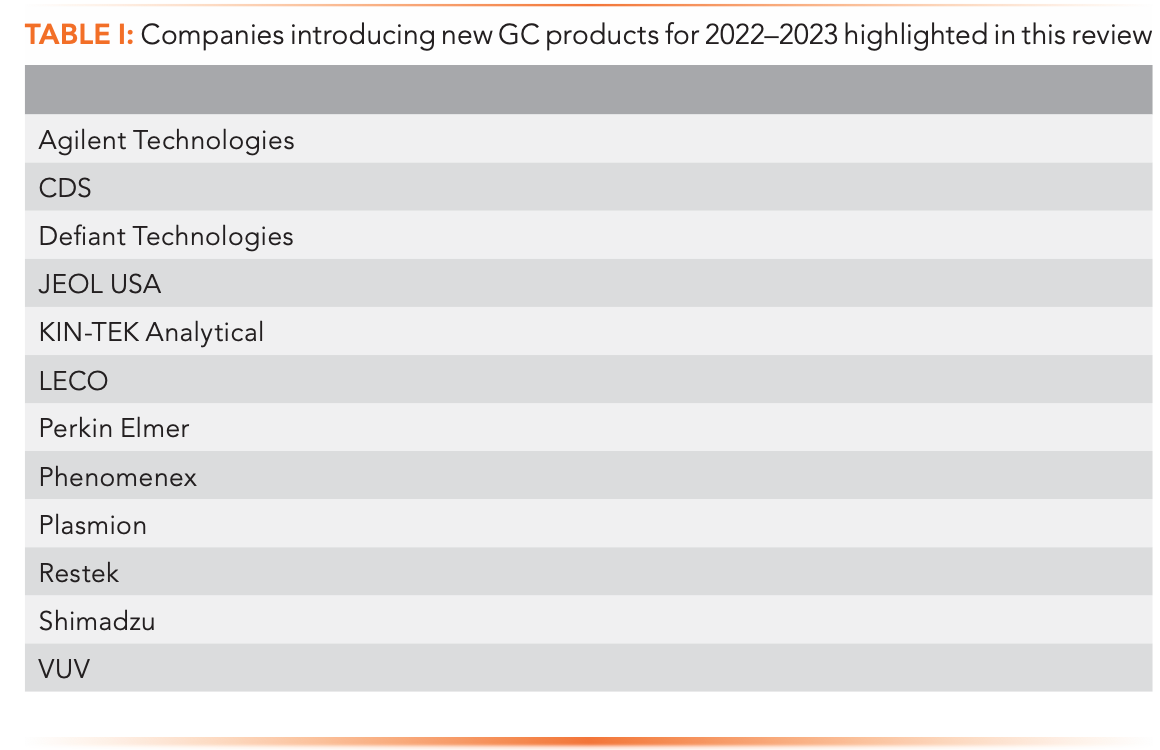
In new instruments, trends seen over the past few years toward smaller and more automated systems, systems that are more specialized, and spectrometric detectors continue this year. Table II shows a list of new complete instruments introduced over the past year. All these systems are designed with optimizing and simplifying workflows, operation, and maintenance. One concern is that systems are becoming so automated and convenient to use that training and education may be viewed as less necessary, a seemingly reasonable view until something goes wrong. They represent a range from a portable instrument about the size of a small briefcase, to a bench-top instrument to a range of three options for GC-MS and GC-MS/MS.
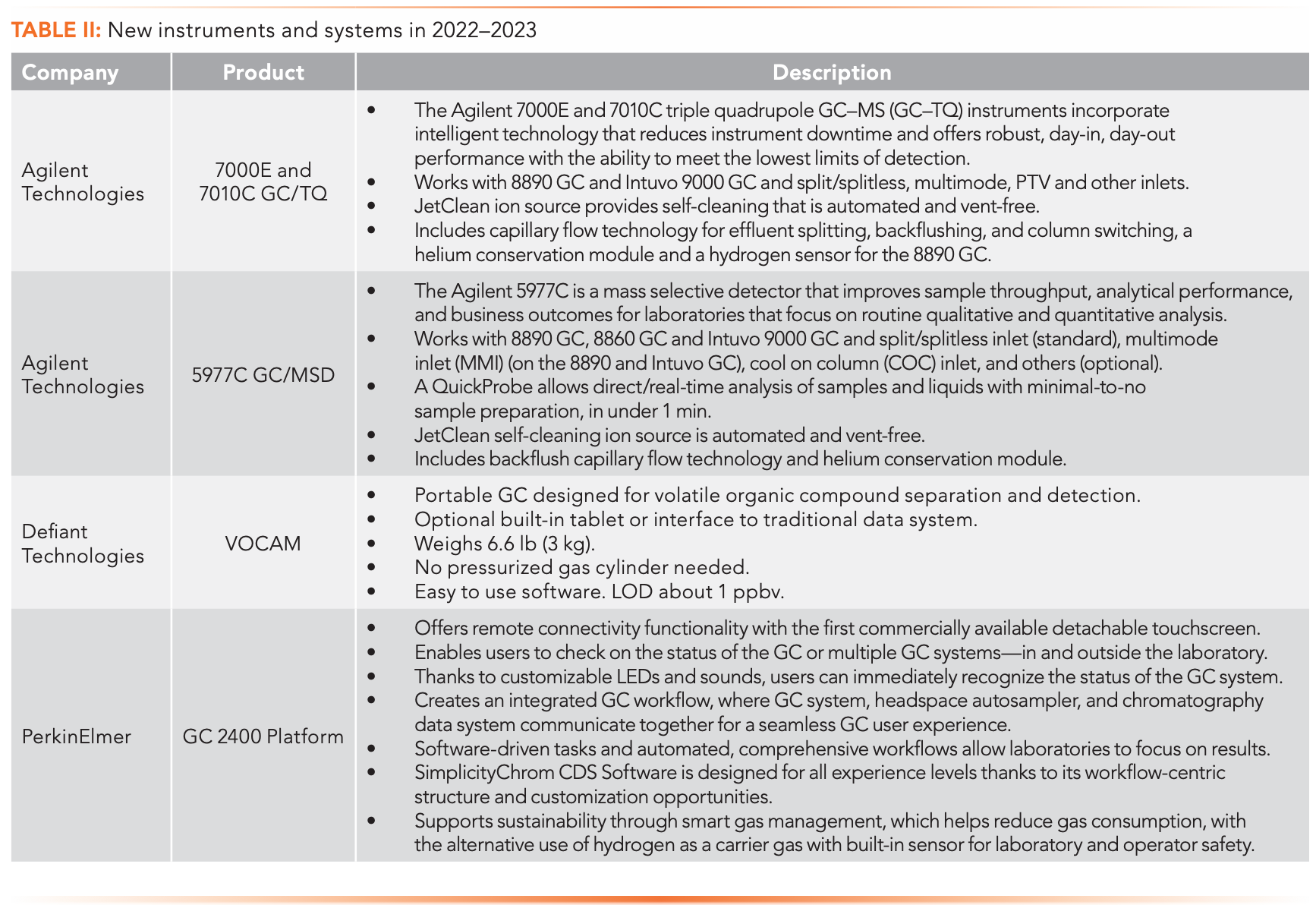
Stationary phases continue to be updated by most of the vendors, with nearly all making incremental improvements or showing new applications in their online application note libraries. The two new stationary phases that appear on this year’s survey were capillary column phases tailored to specific applications. These are highlighted in Table III. This incremental trend in capillary column stationary phase development for specific specialized problems continues. The 2021 review included two phases for fatty acid methyl esters and dioxins. Users are encouraged to contact and keep up with your column vendor; new phases and improvements are happening continuously.
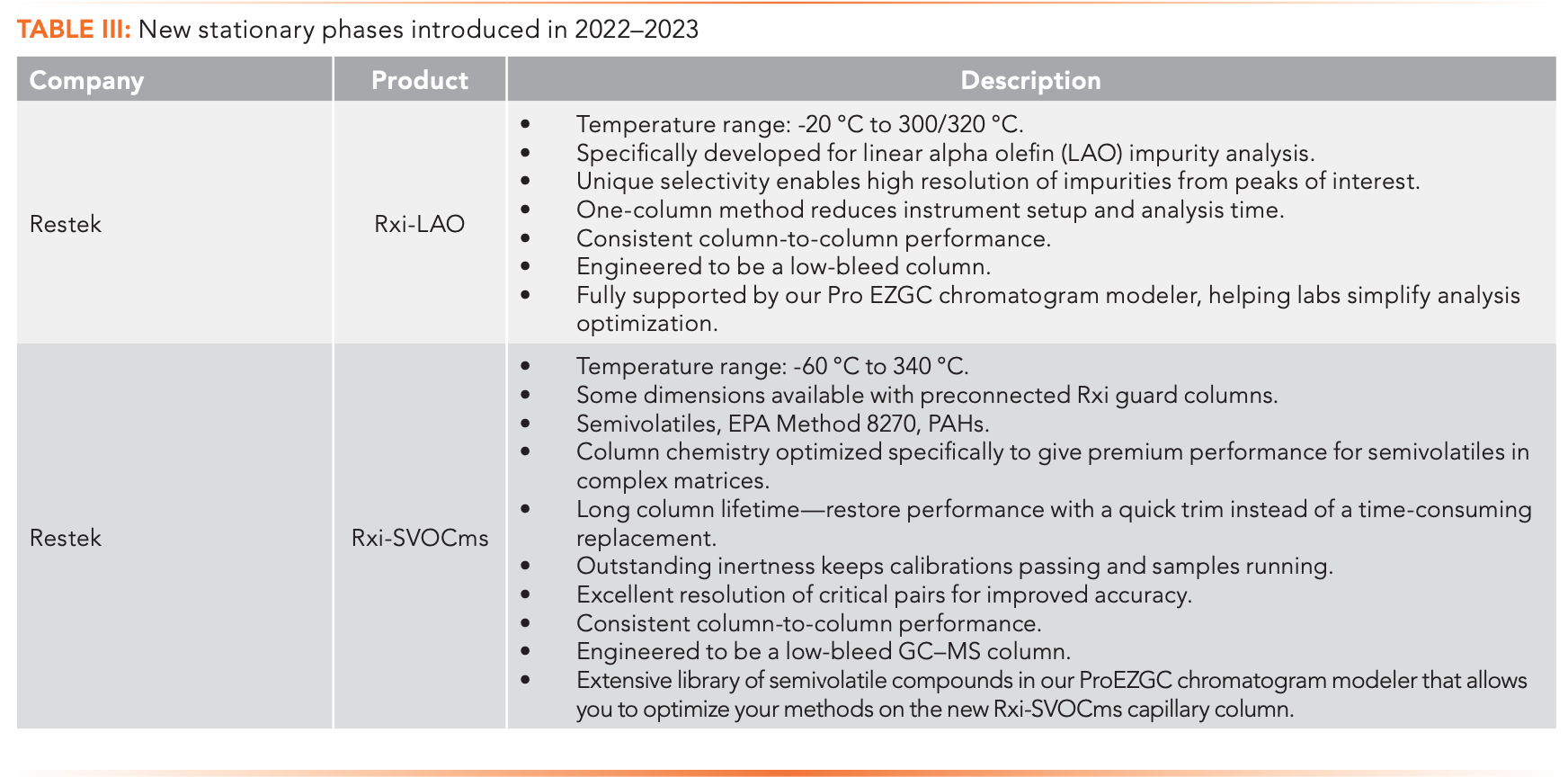
In 2022–2023, developments in new accessories, sampling devices and detectors continue to trend toward simplifying analysis and making chromatographers’ work easier. We saw new advances in mass detection, with new ion sources, focused on making soft ionization techniques more accessible, a new vacuum ultraviolet detector and a new sulfur chemiluminescence detector. On the sampling side, new systems for purge and trap and gas mixing were presented. For more information on sample preparation, see the specific sample preparation article by Doug Raynie in next month’s issue of LCGC North America (4). As with the GC reviews, it is worthwhile to review the past two years as well for a complete picture of sample preparation products (5,6). Table IV provides a listing of products released in the past year that illustrate this trend. Many of the accessories are instrumental improvements in detectors and sampling devices.
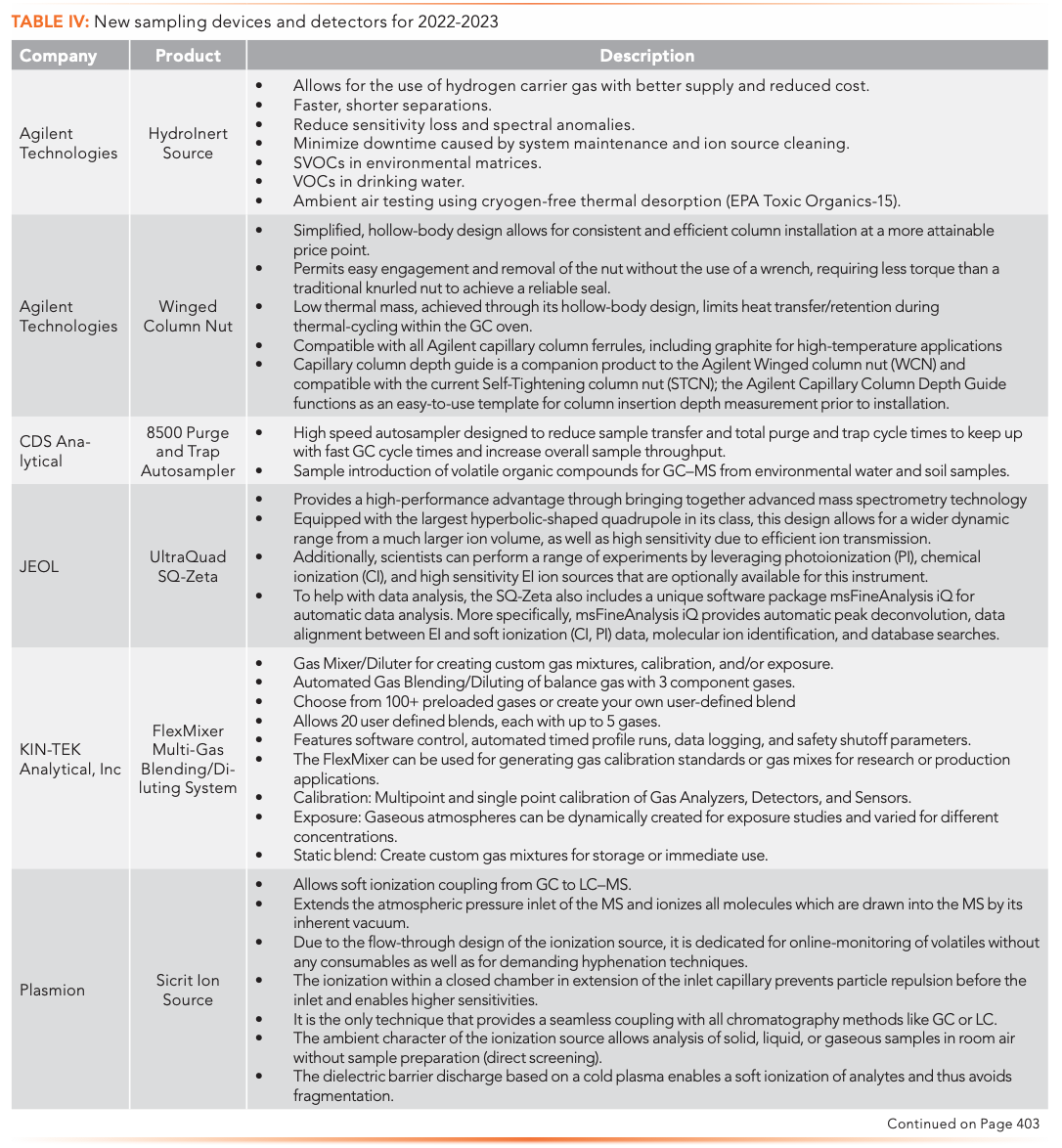
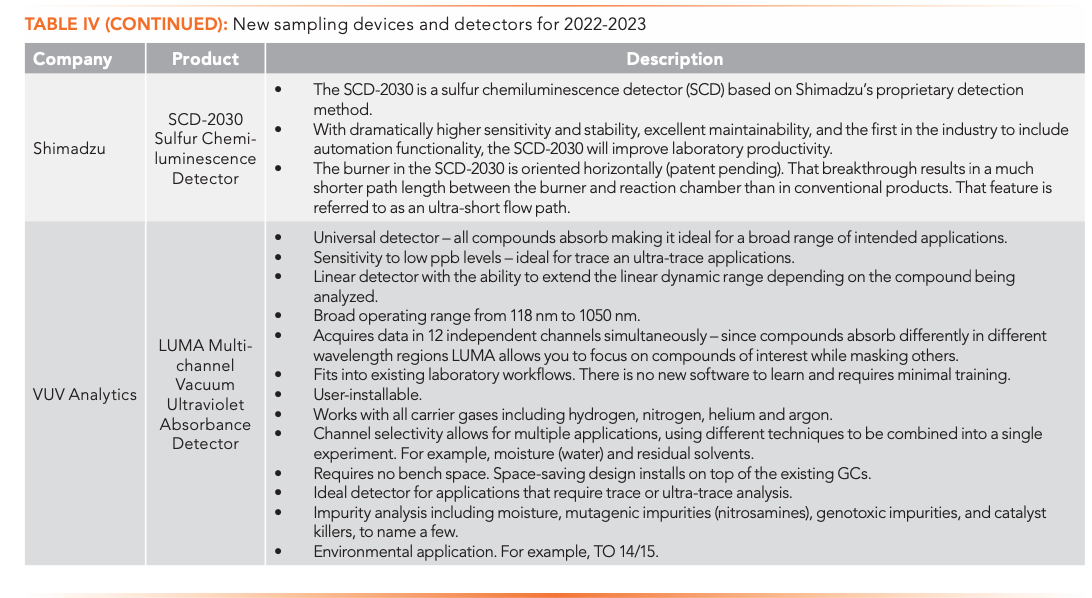
Software and online resources continue to evolve along with the new technology. Two significantly updated systems for MS and GCxGC-MS analysis were released, along with updates to a free online method development platform. Along with the GC platform, a complimentary LC method development program is now available. Table V highlights these developments in software and online resources.
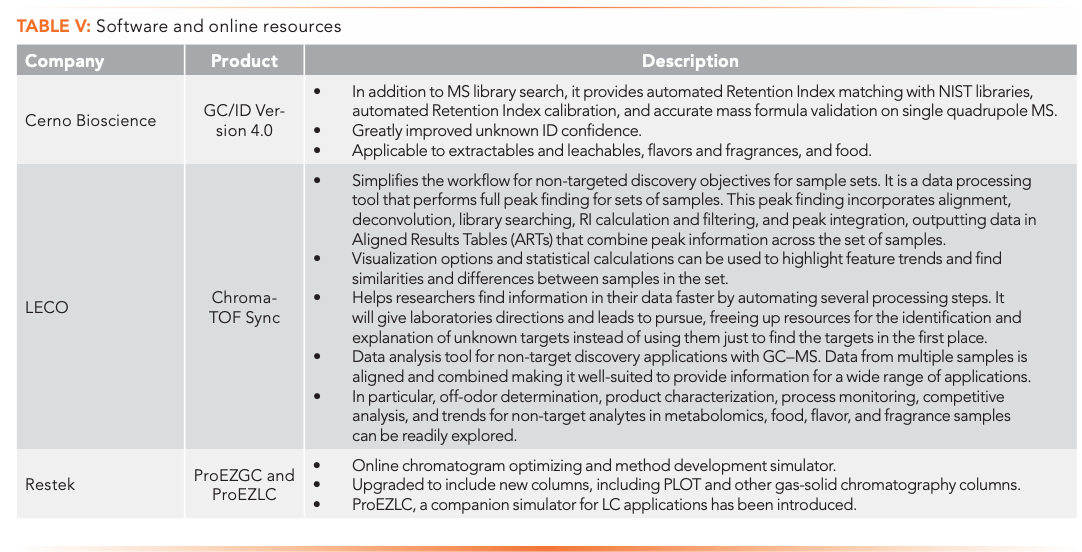
Our emergence from the pandemic provides more opportunities to continue education and training. Besides numerous short courses associated with Pittcon and other major conferences, many additional training and educational resources are available for 2023. The pandemic has resulted in much growth in online training and seminar offerings by vendors and training organizations, so check with your vendor. Opportunities for in-person short courses, seminars and training are moving again and are offered by most major instrument vendors and through many conferences and organizations, including the American Chemical Society, Eastern Analytical Symposium (Princeton, New Jersey, November 2023), local and regional chromatography discussion groups and, of course, Pittcon. LCGC’s online training system, ChromAcademy, is continuously adding content and is again hosting ChromTalks, a virtual symposium in May 2023.
As gas chromatography has passed its 70th birthday, development and innovation are ongoing and include all areas: sampling and supplies, new instruments, columns, detectors, data systems and educational opportunities. I look forward to more innovation and advancements in the coming years, and I hope to see many of you at EAS 2023 in my home state of New Jersey, or at Pittcon 2024 in San Diego.
References
(1) Snow, N. H. New Gas Chromatography Products for 2021-2022. LCGC North Amer. 2022, 40 (4), 158–164. https://doi.org/10.56530/lcgc.na.la4187p6
(2) Snow, N. H. New Gas Chromatography Products for 2020-2021. LCGC North Amer. 2021, 39 (4), 167–171.
(3) Snow, N. H. New Gas Chromatography Products for 2019-2020. LCGC North Amer. 2020, 38 (5), 277–290.
(4) Raynie, D. E. New Sample Preparation Products and Accessories. LCGC North Amer. 2023, 41 (5), in production.
(5) Raynie, D. E. New Sample Preparation Products and Accessories. LCGC North Amer. 2022, 40 (5) 218–222. https://doi.org/10.56530/lcgc.na.hx9178z7
(6) Raynie, D. E. New Sample Preparation Products and Accessories. LCGC North Amer. 2021, 39 (5) 228–231.
About the Author
Nicholas H. Snow is the Founding Endowed Professor in the Department of Chemistry and Biochemistry at Seton Hall University, and an Adjunct Professor of Medical Science. During his 30 years as a chromatographer, he has published more than 70 refereed articles and book chapters and has given more than 200 presentations and short courses. He is interested in the fundamentals and applications of separation science, especially gas chromatography, sampling, and sample preparation for chemical analysis. His research group is very active, with ongoing projects using GC, GC–MS, two-dimensional GC, and extraction methods including headspace, liquid–liquid extraction, and solid-phase microextraction. Direct correspondence to: LCGCedit@mmhgroup.com

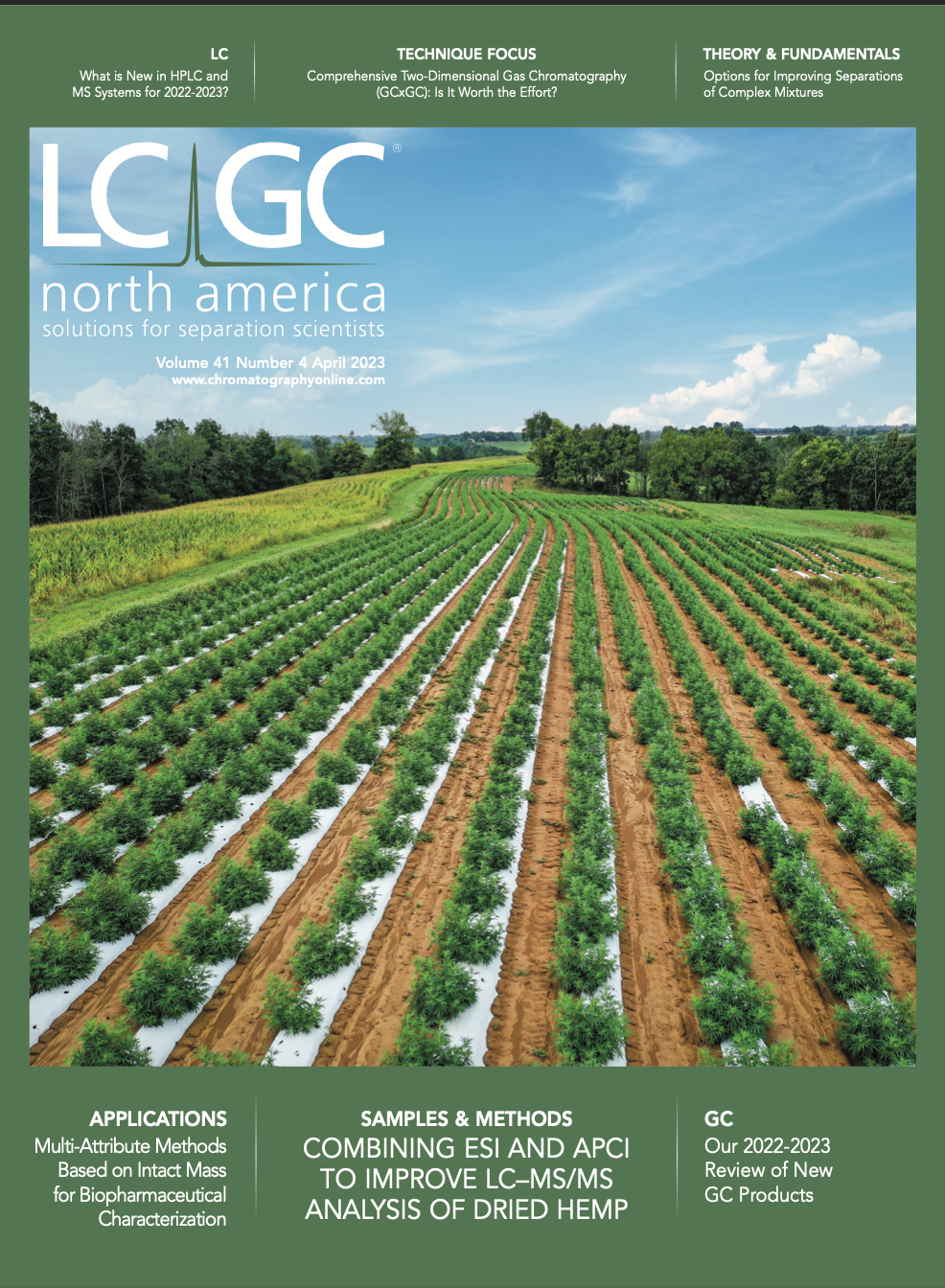
Sorbonne Researchers Develop Miniaturized GC Detector for VOC Analysis
April 16th 2025A team of scientists from the Paris university developed and optimized MAVERIC, a miniaturized and autonomous gas chromatography (GC) system coupled to a nano-gravimetric detector (NGD) based on a NEMS (nano-electromechanical-system) resonator.
Miniaturized GC–MS Method for BVOC Analysis of Spanish Trees
April 16th 2025University of Valladolid scientists used a miniaturized method for analyzing biogenic volatile organic compounds (BVOCs) emitted by tree species, using headspace solid-phase microextraction coupled with gas chromatography and quadrupole time-of-flight mass spectrometry (HS-SPME-GC–QTOF-MS) has been developed.
Fundamentals of Benchtop GC–MS Data Analysis and Terminology
April 5th 2025In this installment, we will review the fundamental terminology and data analysis principles in benchtop GC–MS. We will compare the three modes of analysis—full scan, extracted ion chromatograms, and selected ion monitoring—and see how each is used for quantitative and quantitative analysis.



